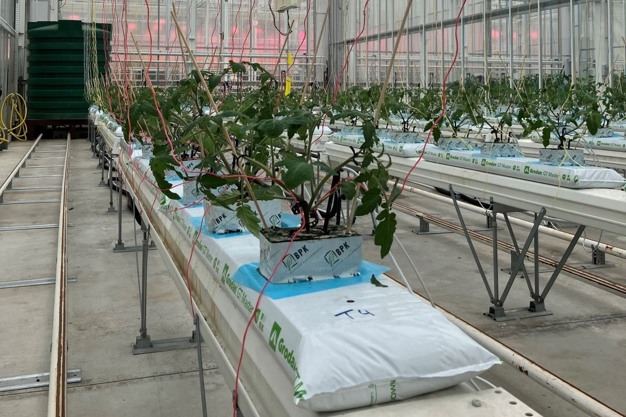In the VLAIO project OptiWAIE (Optimization of Water Use in Greenhouse Horticulture using Alternative Internal and External Water Sources), the suitability of purified CHP condensate water for use as alternative source water for the production of irrigation water is being investigated. After a test in sweet pepper, a test in tomato will follow this year.

Condensate water can potentially be contaminated with metals and mineral oils on the one hand, and it also has a low pH. To use this water, purification may be needed first.
Comparison trial
In the 2025 growing season, a tomato crop will be started where part of the plants will receive irrigation water with 10% purified CHP condensate water and another part 10% non-purified condensate water. A part of the plants will also receive standard irrigation water using only rainwater as source water. During the trial, it will be checked that no phytotoxic effects are observed. Plant height and yields will be monitored and samples will be taken regularly to check that metals do not accumulate in the fruits.
For a greenhouse farm, it is estimated that about 0.75 liters of condensation water is available per m³ of natural gas consumed. This can provide 5-10% of a greenhouse horticulture's freshwater needs, if there is sufficient storage.
